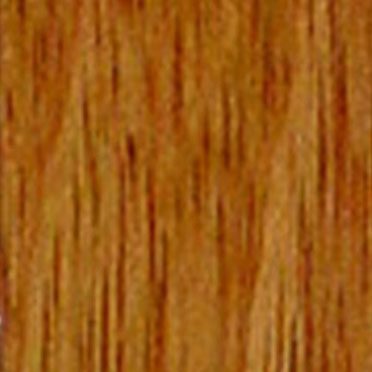| Flooring |
 |
#1 Mahogany, Santos:
Myroxylon Balsamum; also called Incienso Colorado, Cabreuva, Balsamo, and Cdro, Chino.
It has a lustrous interlocked grain, wood starting out as reddish-brown darkening and getting redder upon exposure.
It is 70% harder than red oak and 41% more stable. |
 |
#4 Teak, Brazilian:
Dipteryx Odorata; also called Cumaru, Southern Chestnut and tonka.
It's an extremely dense heavy wood raging from light reddish-brown to yellowish brown.
Upon exposure, it becomes a moreuniform light brown.
The wood has interlocked arain and a fine texture.
It is 174% harder than red oak and 23% more stable. |
 |
#5 Cherry, Peruvian
Manilkara Bidentata; also called Massaranduba, Bulletwood, Chicozapote and Quinilla Colorado.
It is a dark reddish-brown, fine textured with a usually straight but sometimes interlocked grain.
It is 63% harder than red oak and about 8% more stable. |
 |
#6 White Oak
Grain: Open, with longer rays than red oak.
Occasional crotches have swirls and burls.
It is 6% softer than northern red oak. |
 |
#15 Walnut, Brazilian:
Lucuma Sp; also called Huangana Caspi.
It is a rich reddish-brown wood with darker streaks.
The wood has a fine texture and a medium luster.
It's mixed color presents a different and beautiful look.
It is 40% harder than red oak and 24% more stable. |
 |
#16 Cherry, Andean:
Lucuma Sp; also called Huangana Caspi.
It is a rich reddish-brown wood.
The wood has a fine texture and a medium luster.
It is 40% harder than red oak and 24% more stable. |
 |
#19 Maple, Peruvian:
Brosimum Alicastrum; also called Manchinga, Capoma, Ojoche, Masicar and Muiratinga.
It is an off-white to slightly yellow colored wood with a fine texture and usually straight grain but with some interlocking.
It is 32% harder than red oak and slightly more stable. |
 |
#20 Cherry, Brazilian:
Also called Jatoba.
It is a reddish brown wood, often marked with light dark streaks.
Mostly interlocked grain, moderate to high color variation.
It is 119% harder than northern red oak. |
 |
#21 Dark Cumaru, Brazilian:
Color: at first, red-brown or purple-brown with light yellow-brown or purple streaks;
After exposure, it becomes light brown or yellow-brown.
It is 174% harder than Red Oak and 23% more stable. |
 |
#22 IPE, Brazilian:
Color can very from light yellowish tan with green overtones to almost blackish brown;
Exhibits a large range of coloration when freshly milled;
Darkens over time to medium to dark brown.
It is 185% harder than Red Oak and 24% more stable. |
 |
#25 Cherry, Asian:
|
 |
#29 Tauari, Brazilian:
The heartwood color is cream or cream white, with a pinkish or yellowish tinge.
The heartwood and sapwood are not distinct.
The grain is straight or uniformly interlocked. Texture is generally coarse to medium.
It is 40% harder than Red Oak and 24% more stable. |

